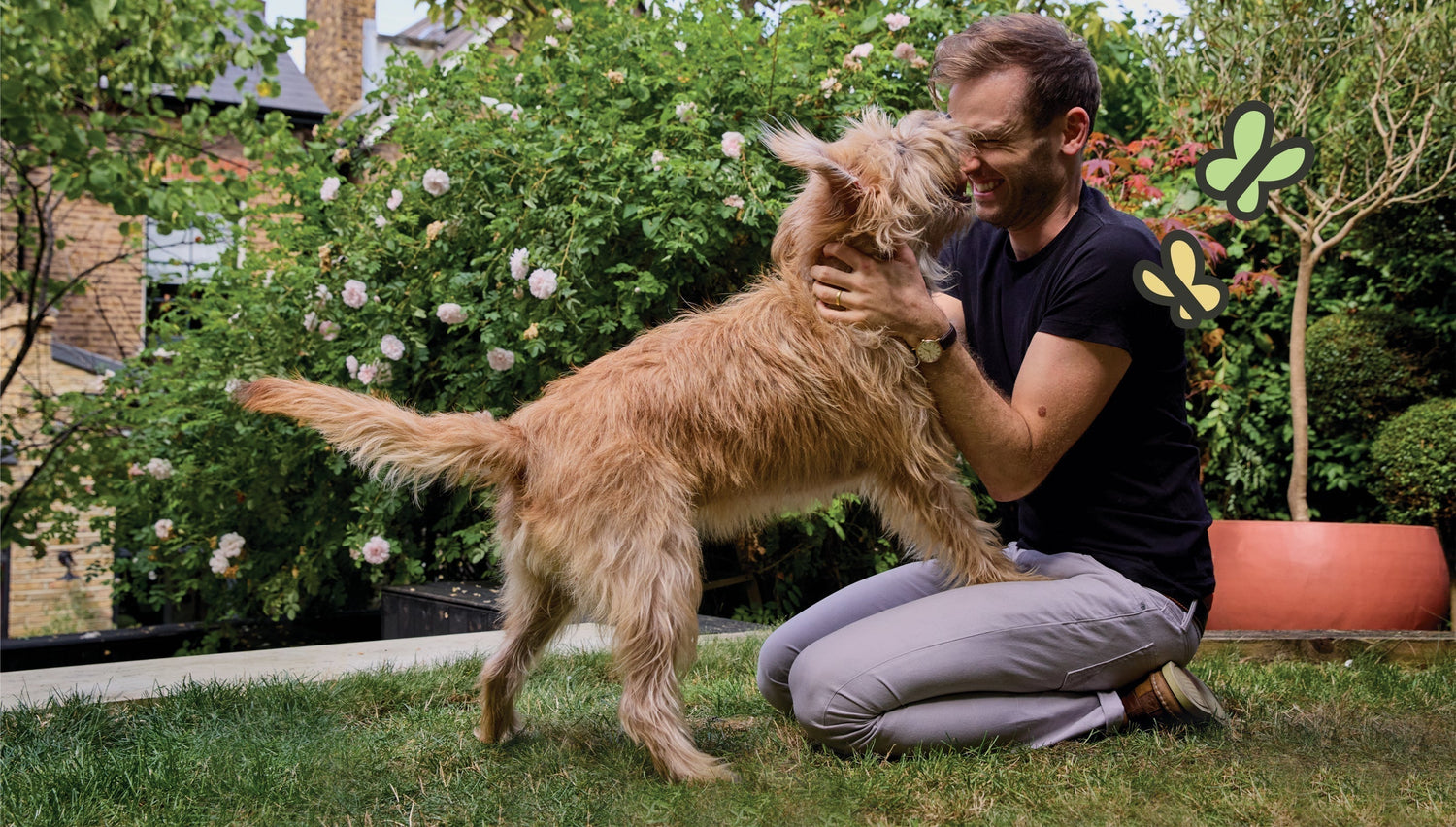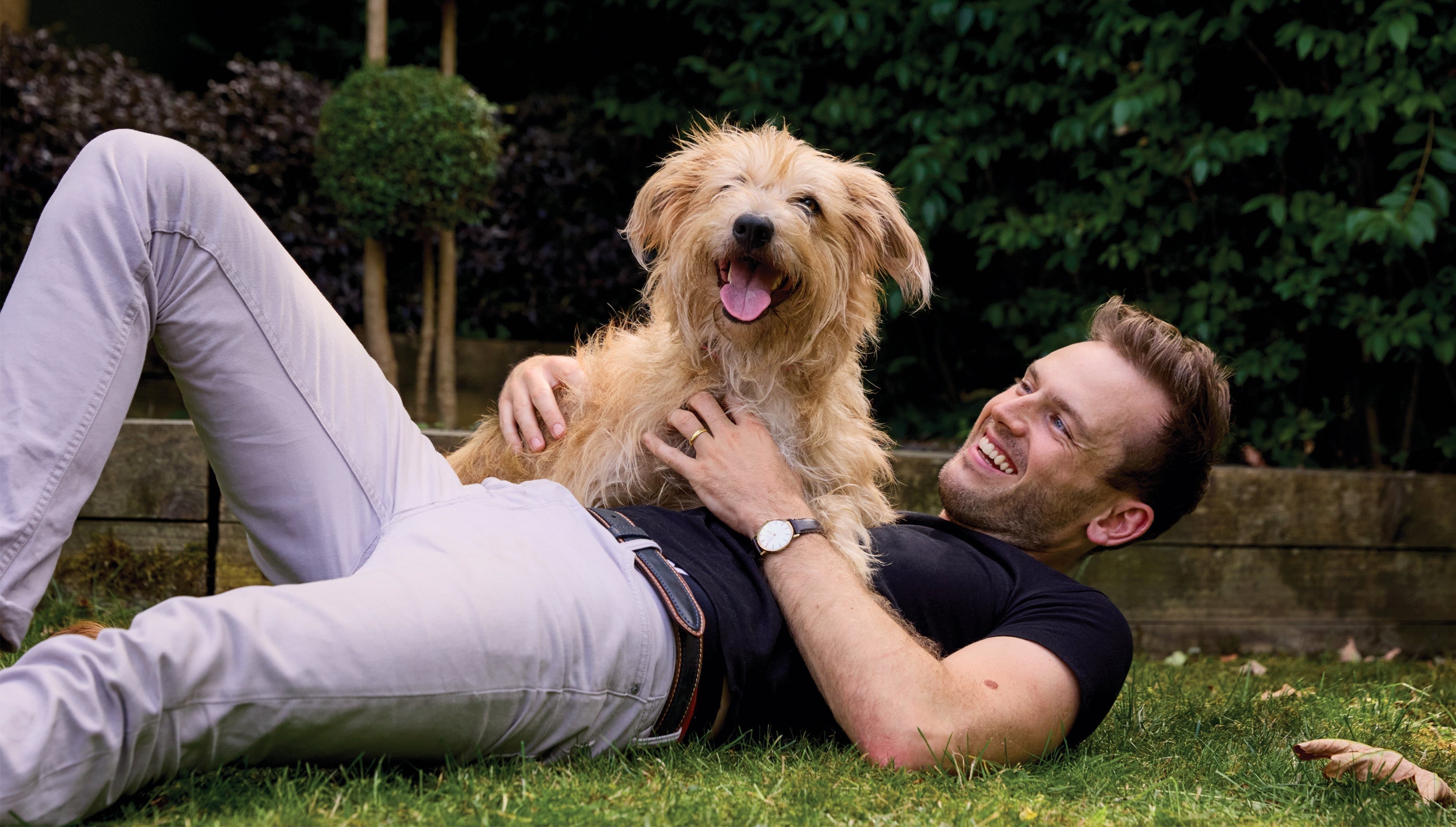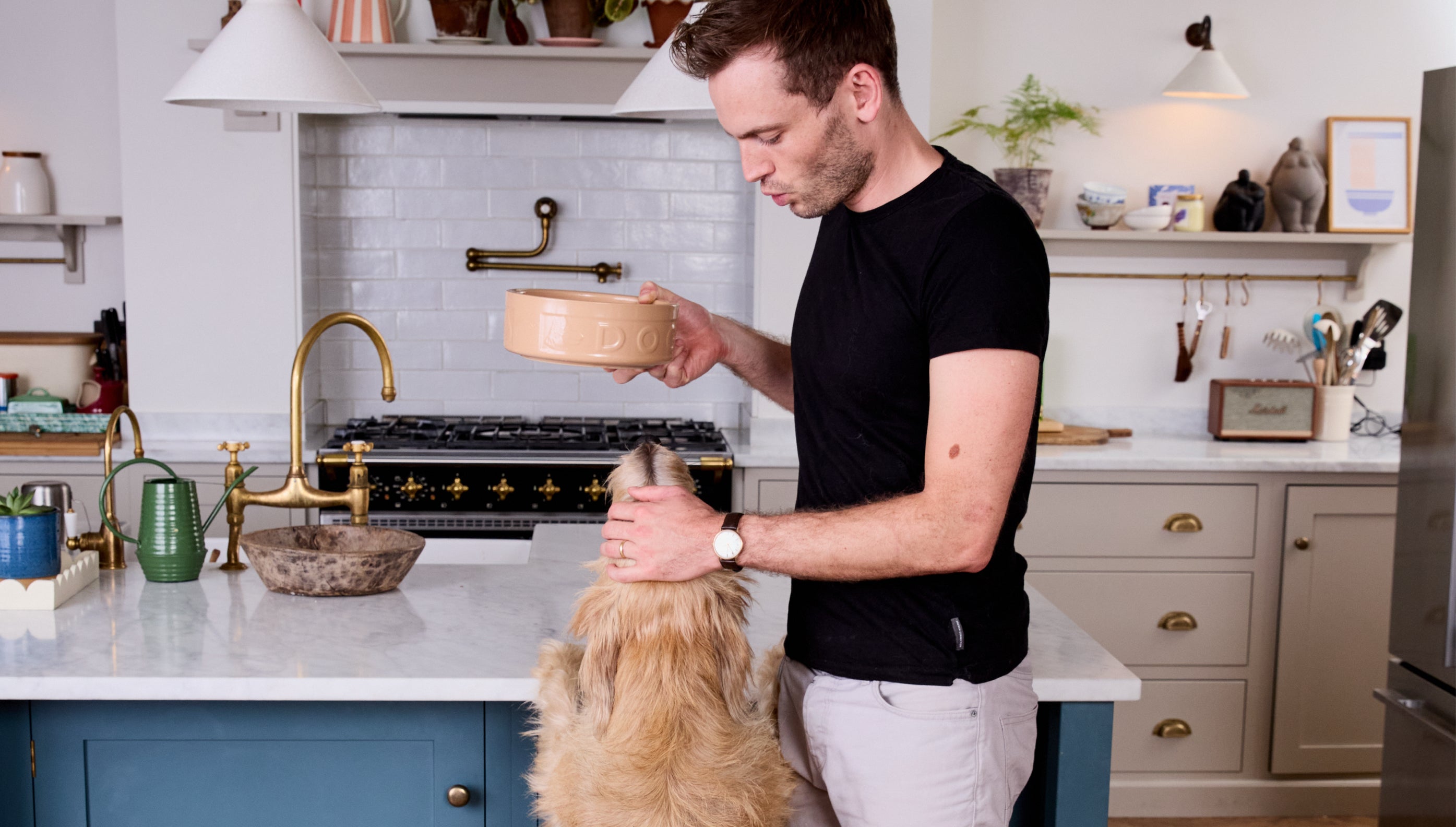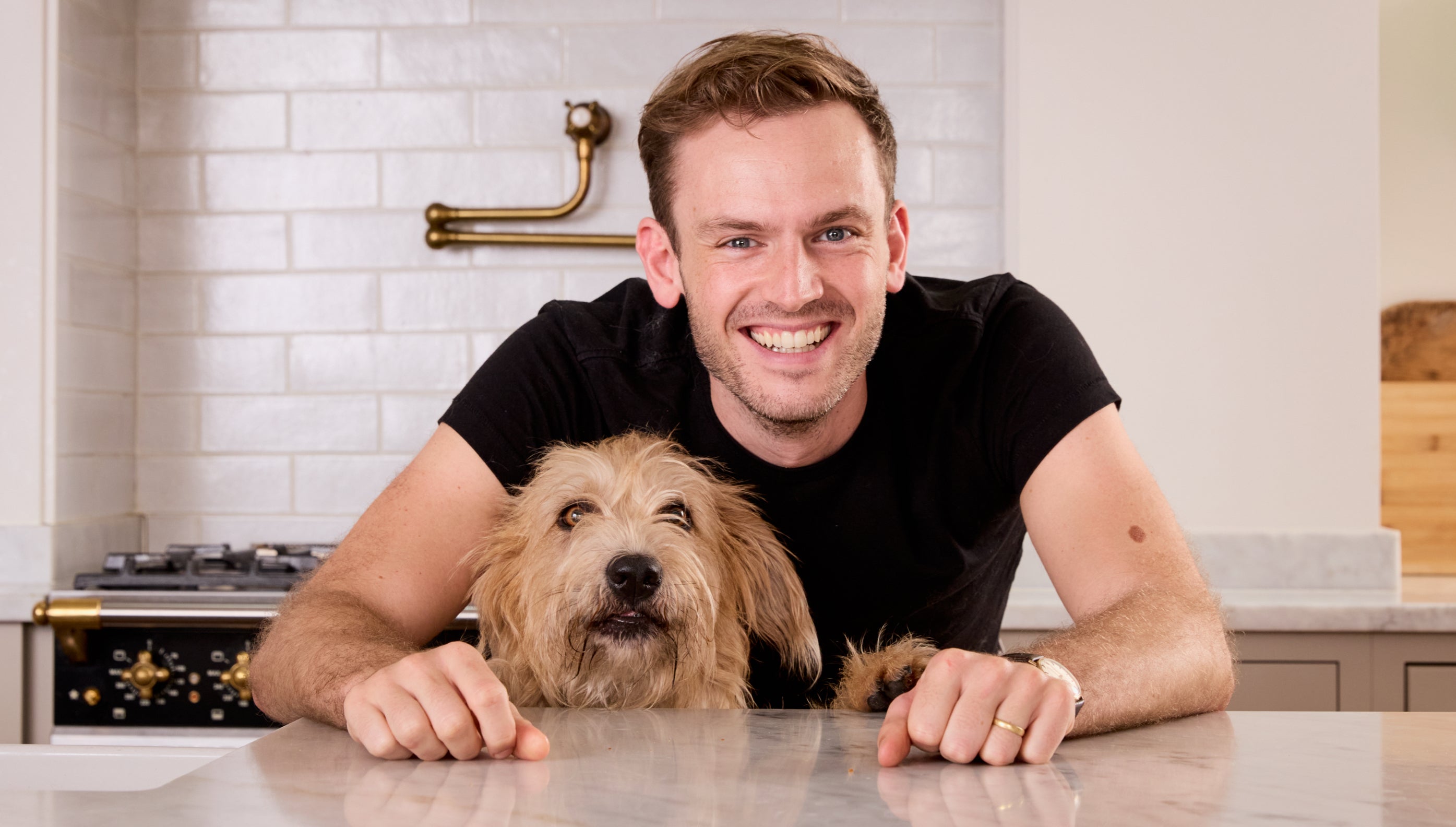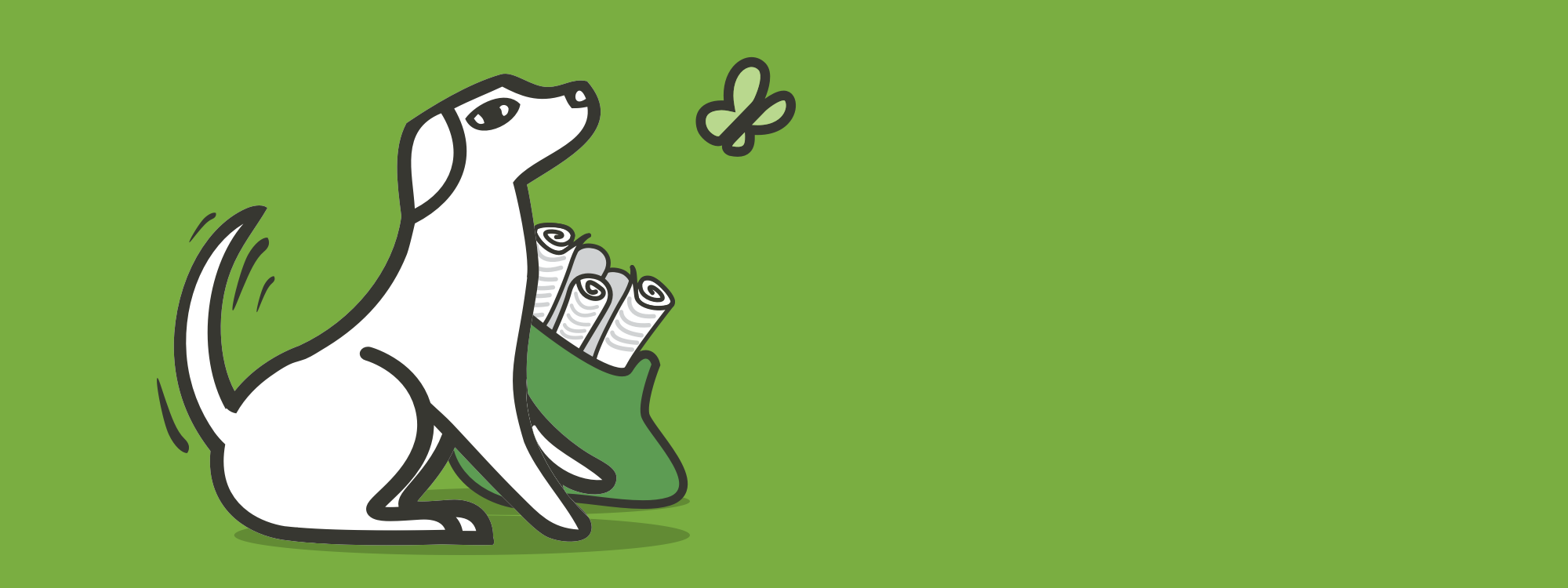We asked pet expert Rory the Vet for his advice.
Bathing your pooch might be beneficial in keeping your cream carpet and wooden floors clean from muddy paws, but it’s vitally important to keep on top of your canine companion’s hygiene for the sake of their health and happiness, too. Washing their coat and skin removes any dirt and debris, as well as dead hair and bad odours. Whether you need to wash your dog regularly due to muddy park adventures, or because they’re generally prone to giving off an extra doggy smell, the question is, how often should you wash your dog? Let’s get into it.
MEET RORY THE VET

We’ve partnered up with animal whisperer and renowned veterinarian, Dr Rory Cowlam, to share his wisdom when it comes to all things furry. And boy, does this man know his stuff.
Starting with his degree from the Royal Veterinary College, Rory has since co-starred in the CBBC’s series The Pet Factor, shared his knowledge on the likes of Blue Peter and written all about it in his book, Secret Life of a Vet.
Follow him on Instagram
What to consider when deciding if it’s bath time for your dog
Generally, most dogs can be bathed once a month. But there are many factors to consider that would affect whether you should bathe your dog more or less than this. You as their pet parent will need to evaluate all of the below before coming to that conclusion. Remember, you can always consult your vet if you’re still unsure.

1. Dog breed and coat type
First thing to consider – the breed of your dog and their coat type. Certain breeds have longer hair, which will require more upkeep. This can be done via bathing, but they may also benefit from regular grooming as well as dry shampoos and conditioners.
- Shorthaired breeds may need to be bathed every one to three months (depending on further factors).
- Dogs with soft coats and oily coats may need to be washed more often.
- Those with thick fur can be washed less frequently because they shed regularly.
- Hairless dogs can be at risk to skin health issues, and so may need more baths to help combat this.
2. Activity level and environment
How active your pooch is will affect how often they will need to be washed. Very active canines will need to be bathed more often than those who are more sedentary. Especially dogs who love to roll around in the grass, jump in muddy puddles and swim!
Your dog’s environment also comes to play here—whether they live in an urban or rural area, what the weather is like and if they tend to spend more time in or outdoors. The more time your little friend spends outside means more dirt, and therefore, more bathing is needed.

3. Skin and coat health
Certain breeds are more prone to skin conditions such as allergies, dermatitis or infections. These dogs will require more frequent bathing to protect them from harmful bacteria or to treat current symptoms. Other breeds secrete natural oils that help them keep a healthy coat. Washing them too often can strip these good oils away, causing dryness and skin irritation.
It’s essential you use the appropriate shampoos and conditioners suitable for your dog’s coat and skin. Your vet can guide you with this. They may suggest a medicated shampoo as a treatment for symptoms like itching, depending on the problem in question. Your vet will explain how often you should apply the shampoo and conditioner.
For further guidance, see here.

How to bathe your dog
Now, let the bathing commence! Some dogs love baths, some dogs loathe them! Be sure to reassure yours with gentle words and vocal praise the entire time. A rewarding treat after should help them co-operate more the next time. For a fuss-free, successful dog bath, follow the steps below.
1. Prepare the bath
Before you begin, prep! Gather the towel(s) you plan on using, including your dog’s shampoo and conditioner. Wear clothing you don’t mind getting wet. And get the water to run tepid (taking into account the temperature outside).
2. Brush your dog
Before introducing water, it's time to brush. I’d start by running your fingers through their fur to loosen any matted fur, which can get worse when wet. Then use a dog brush to comb through, making sure to be gentle in sensitive spots. Areas with thicker fur will need more attention. Brush forwards and backwards and remove hair from the brush every so often - but careful not to overdo it!
3. Wet your dog’s fur and apply shampoo
Once you’ve tested the temperature of the water and deemed it warm enough for your pup (but not hot), soak your dog’s body, ensuring all their fur is wet, including underneath. Apply their shampoo, following the instructions on the bottle or from your vet. Rub it into their body until it lathers. Do not put any on your dog’s face, head or ears. If their face also needs a clean, simply wipe it with a damp cloth - no soap or product necessary. If your vet has recommended conditioner, then follow the same instructions after your dog’s fur has had all the shampoo rinsed off first.
4. Rinse your dog’s fur
Now it’s time to rinse off all of the product. This needs to be done thoroughly with tepid/warm water. Residual shampoo can be irritating to their skin, so it’s important to make sure it’s all gone.
5. Dry your dog off
Once all the water is drained and the tap is off, use a towel to dry your pooch. Wet hair can stay wet for a long time, which can make your dog cold and increase microbe growth on their skin, so it is essential to make sure that they’re dry. If your dog seems okay with hairdryers, you can use a cool setting to help if you hold it far away from their skin and keep it moving throughout.

Signs your dog needs a bath
Sometimes it can be very obvious when your dog needs a good scrub – a muddy paw trail leading into your living room for instance, or a bad odour and a visibly dirty coat. So go ahead and give them a wash if needed! Other than that, I would suggest maintaining a regular grooming routine based on the earlier estimations of how often your dog would need bathing.
What to do if your dog hates having a bath
Most dogs don’t enjoy baths, but what if your dog really REALLY doesn’t like them? As I mentioned earlier, treats can do wonders for helping, as can vocal reassurance. Here are a couple other methods that can help make baths stress-free for your little friend.
- Take things slow and steady
- Bathe them in a quiet area
- Try flannels over water bathing
- A ‘licky mat’ filled with dog peanut butter (or Lily’s wet food) can help distract them and be a great positive reinforcing tool for bathtime
- Ensure your dog can stand on a stable surface to avoid slipping
- For bigger dogs, it may be easier to bathe them in a walk-in shower or by using a gentle hose when outdoors on warm days
- When washing, begin with their hindquarters first. That way they may feel less startled by the time you get to their more sensitive areas, like their stomach
- Use water from a jug rather than a hose or a shower head, as the speed and sound of the water can freak your dog out
See a vet if you’re concerned about your dog’s skin or fur
If you’re unsure how to look after your dog’s coat and skin, or have noticed a change, make an appointment with your vet who can examine their coat and advise on how to treat. If you feel more confident leaving it to the professionals, your vet will be able to recommend a groomer.
Happy washing!
The information in this article is intended as a guide to help pets and pet parents on their journey together. It is provided for educational and informational purposes only and is not meant as a substitute for professional advice from a vet, behaviourist, trainer or other professional. We encourage all pet parents to consult with their vet and/or behaviourist to ensure their pet’s specific needs are met.
